The Best Running Watches
Strap one of these trackers to your wrist for the ideal running buddy

1. The List In Brief ↴
2. Best Value: Coros Pace 3
3. Best Entry-Level Watch: Kiprun GPS 9003.
4. Best Entry-Level Watch in US: Coros Pace 2
5. Best For Beginners: Garmin Forerunner 55
6. Best SmartWatch: Apple Watch Ultra 2
7. Best Overall: Garmin Forerunner 965
8. Best Garmin: Garmin Forerunner 165 Music
9. Best For Battery Life: Coros Vertix 2
10. Best For Trail Running: Garmin Fenix 7 Pro
11. Best For A Big Spend: Garmin Epix Pro 51mm
12. Buying Advice
When you want to improve your running, knowledge is power. And because of the tech that can be wrapped around your wrist, amateur athletes have more insight into their training than ever before.
A good running watch is more than an everyday fitness tracker. To be worthy of the name a device should contain built-in GPS, enable you to analyze run-specific metrics and include (or be able to assess) training programs.
This used to mean that even the cheapest options cost three figures but, as you’ll see, there are now GPS-ready options below that mark. However, you’ll probably still need to spend more than $100/£100 to get a decent set of features and, for fancier stuff like training and running form analysis, you’ll be looking at $300/£200-plus.
How I Test Running Watches
You can trust Coach
I am an obsessive runner, logging about 50-70 miles per week, and tracking every mile of that using at least one watch, usually two, occasionally three, and on a few notable occasions four. This gives me ample opportunity to drain the battery and test the GPS and heart rate accuracy of watches, as well as using features like navigation, structured workouts and the training analysis on offer. Over the past five years I have tested pretty much every sports watch available from Garmin, Coros, Polar and Suunto, as well as every Apple Watch and many smartwatches from other brands like Samsung, Amazfit and Huawei.
The Quick List
If you have a rough idea of what you need then these top picks in the most popular categories may steer you in the right direction. Click on any watch to jump to Coach’s full review below. There are other great options in the full guide.

The Pace 3 is a lightweight watch that offers all the key features runners need, along with useful extras such as navigation, multi-band GPS and music storage. It will satisfy runners of all levels and significantly outperforms its price.

This watch from Decathlon is built on the platform of the original Coros Apex watch and uses Coros’s app and software. It’s a full multisport watch with excellent battery life and an attractive design with a metal bezel, and comes at a great price.

The Coros Pace 2 offers the features and battery life of watches that are twice as expensive, and more than twice as large and heavy. It’s a brilliant little device and the perfect option for runners or triathletes on a budget.
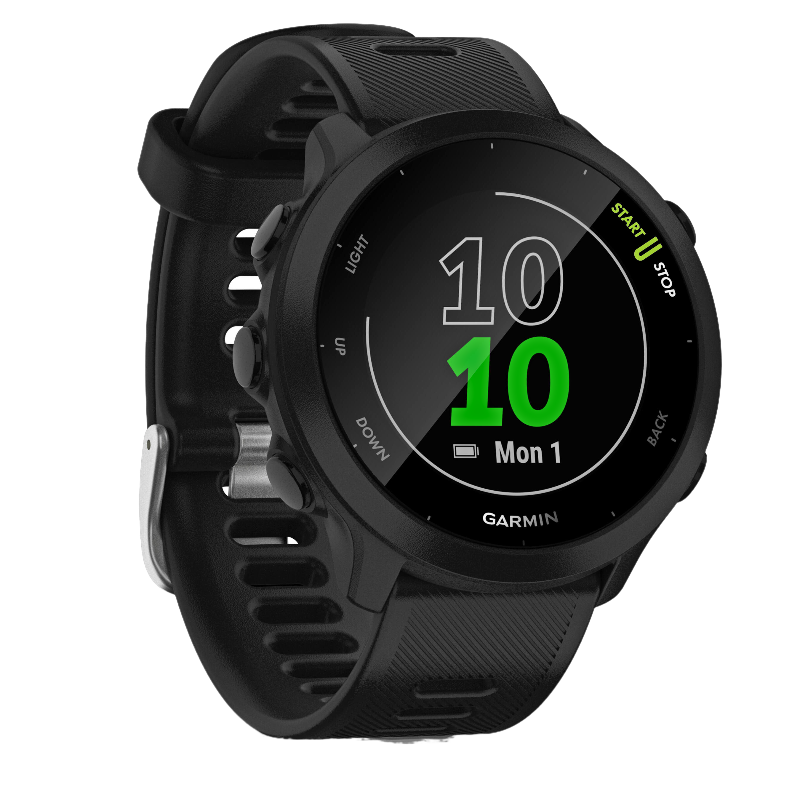
The Coros Pace 2 is more full-featured, but the Forerunner 55 is ideal for new runners because of the guided workouts and training plans it offers. It will help ease you into the sport and get fitter, and it offers great value.
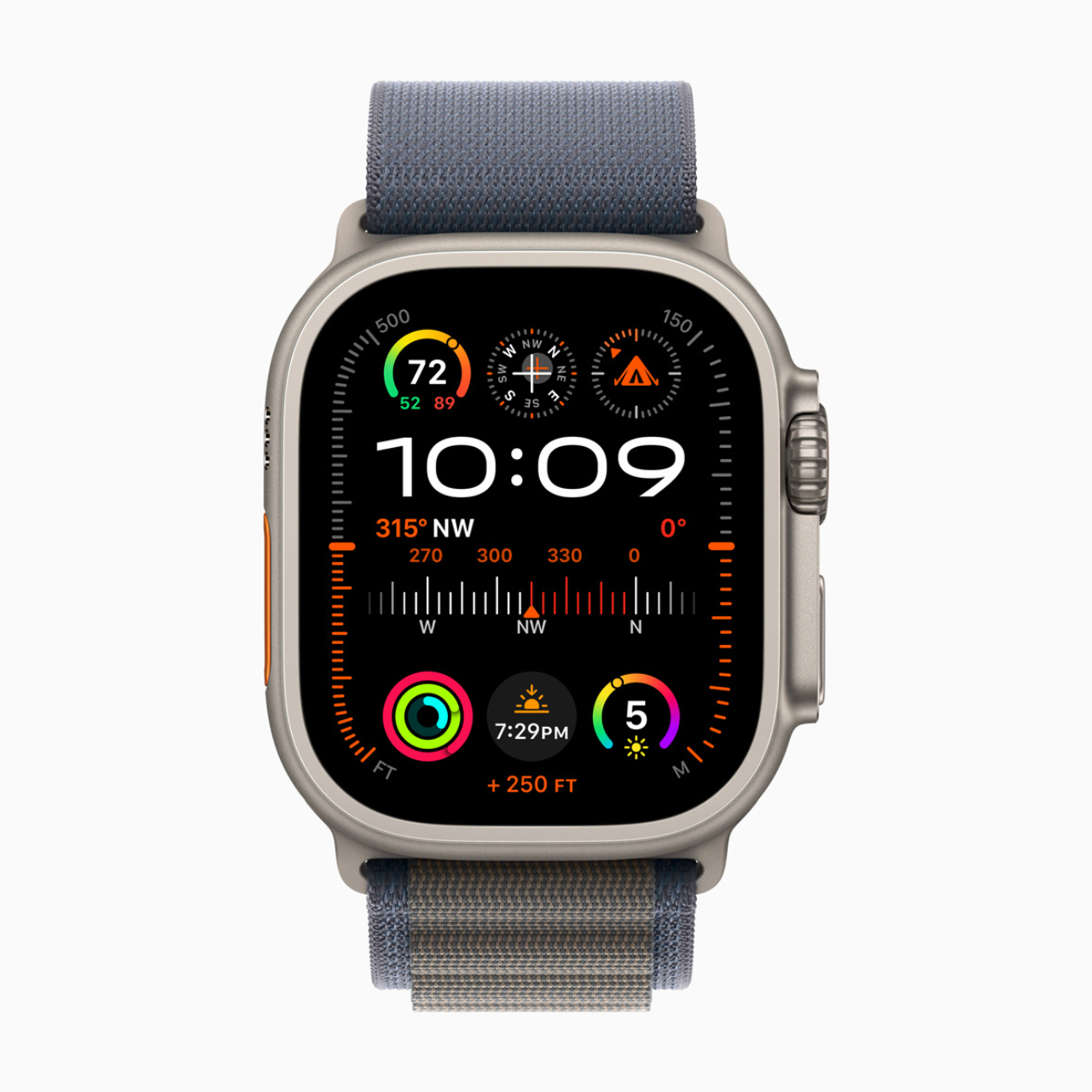
If you want a true smartwatch on your wrist, but still want top-notch sports tracking, the Apple Watch Ultra 2 is the clear pick. It has a sportier, more rugged design than the Apple Watch Series 9 and great native and third-party run tracking.
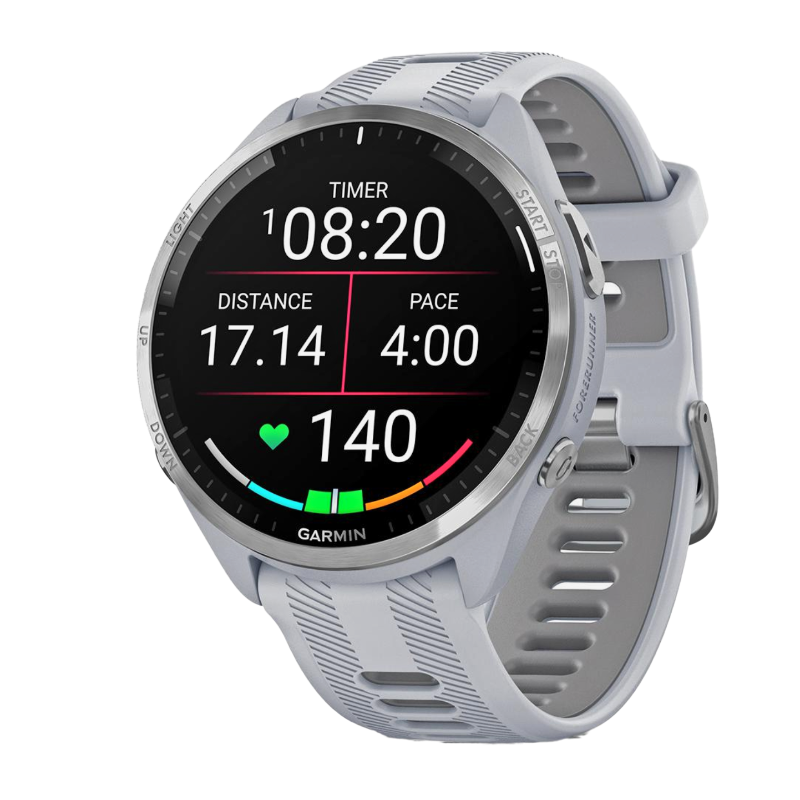
The Forerunner 965 has everything: Best-in-class tracking, training analysis and navigation, music storage, and a bright AMOLED display. It has all Garmin’s top features and is cheaper and lighter than the likes of the Garmin Fenix and Epix, which are more rugged.
Load the next 6 products ↴
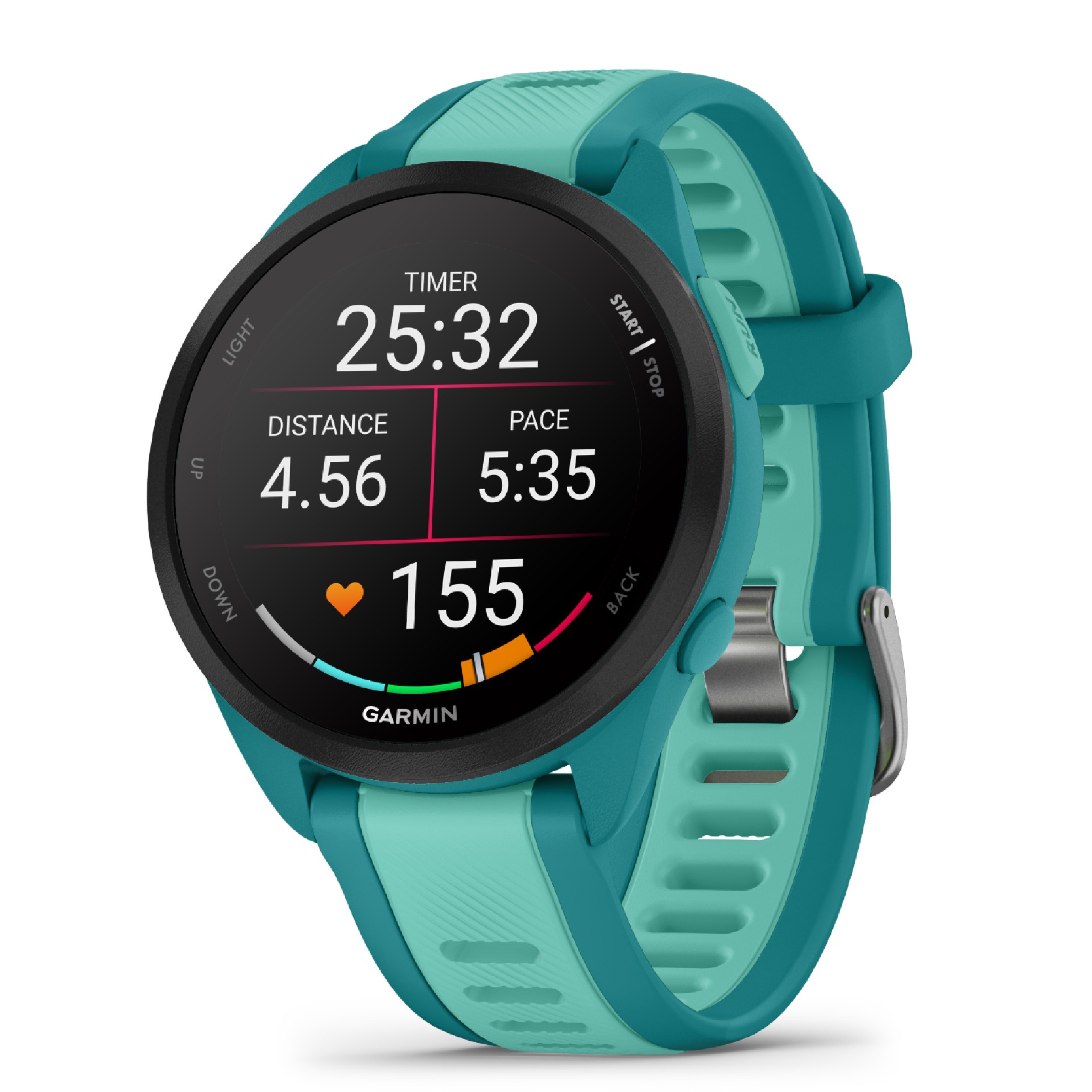
Garmin makes many amazing running watches, but the Forerunner 165 provides the best balance of features and price. It has a bright AMOLED display and gets the essentials of run tracking right, while adding extras like breadcrumb navigation—all for less than other Garmin devices.
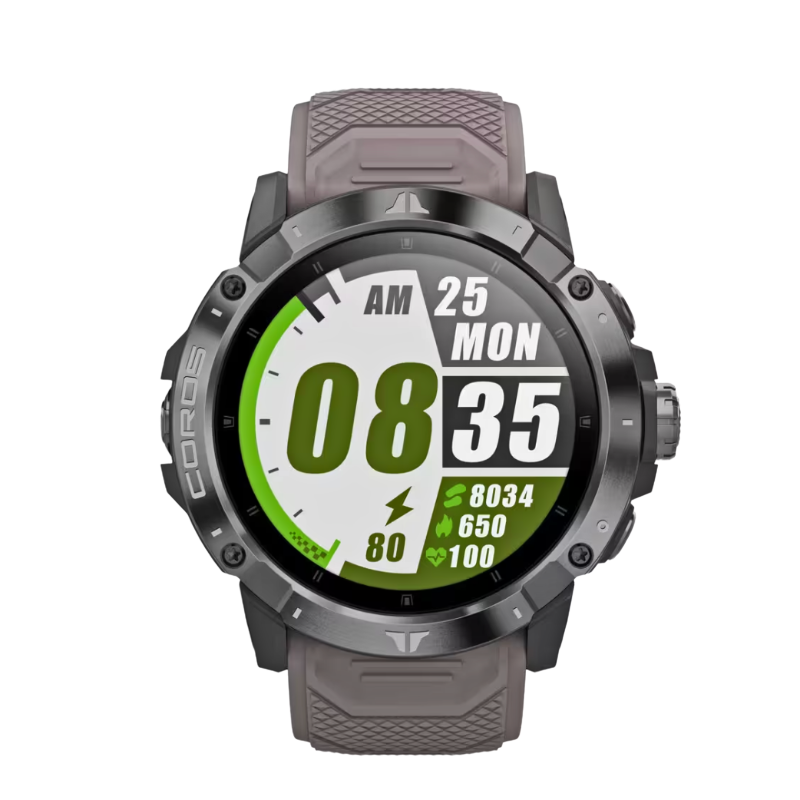
The Coros Vertix 2 is a watch that will make you forget where your charging cable is because you’ll be going over a month between charges. It’s also exceptionally durable and has music storage and maps, along with reliable tracking and useful training analysis.
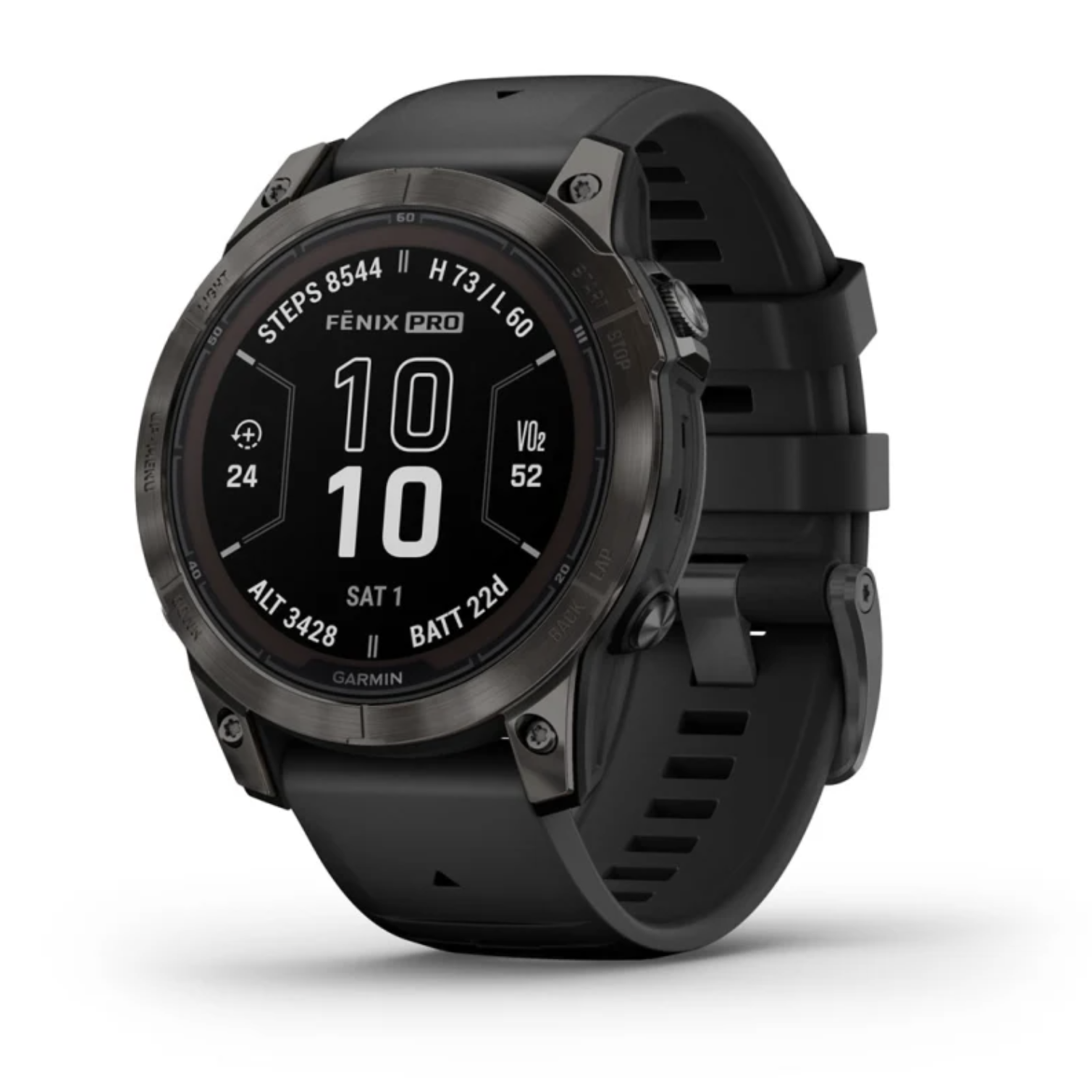
The Fenix 7 Pro has everything you need for off-road running, including long battery life, color maps and even a built-in flashlight for night excursions. All watches in the Pro range have solar charging, which can extend the battery life further in sunny conditions.

The largest model of the Epix Pro has the unique combination of an AMOLED screen with excellent battery life. It also has all Garmin’s top features and a hardy design, making it the best watch around if you don’t mind the price.
The Best Running Watches
Best Value
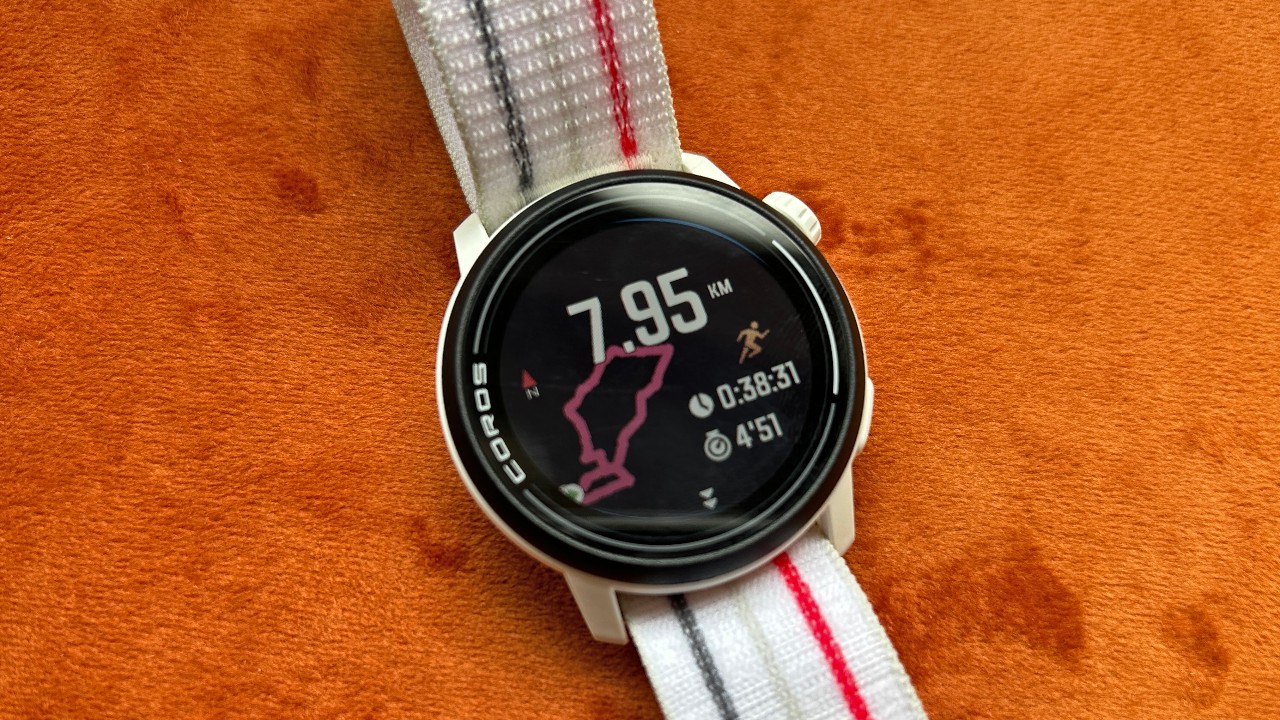

Specifications
Reasons to buy
Reasons to avoid
The Coros Pace 2 was renowned for being great value and that’s now true of the Coros Pace 3, even if it’s more expensive than its predecessor. The Pace 3 offers all the key running features you’ll find on watches that cost hundreds more and, in my experience, it’s an accurate watch, with its multi-band GPS largely matching up well to the accuracy of the Garmin Epix Pro.
The Pace 3 also offers breadcrumb navigation and the same training analysis you get on Coros’s most expensive watches. It has music storage, too, though this is limited for now to MP3 files you drag and drop onto the watch. I can forgive the relative lack of smarts on show here, though, because the sports tracking is spot on.
Read more in my Coros Pace 3 review
Best Entry-Level Watch
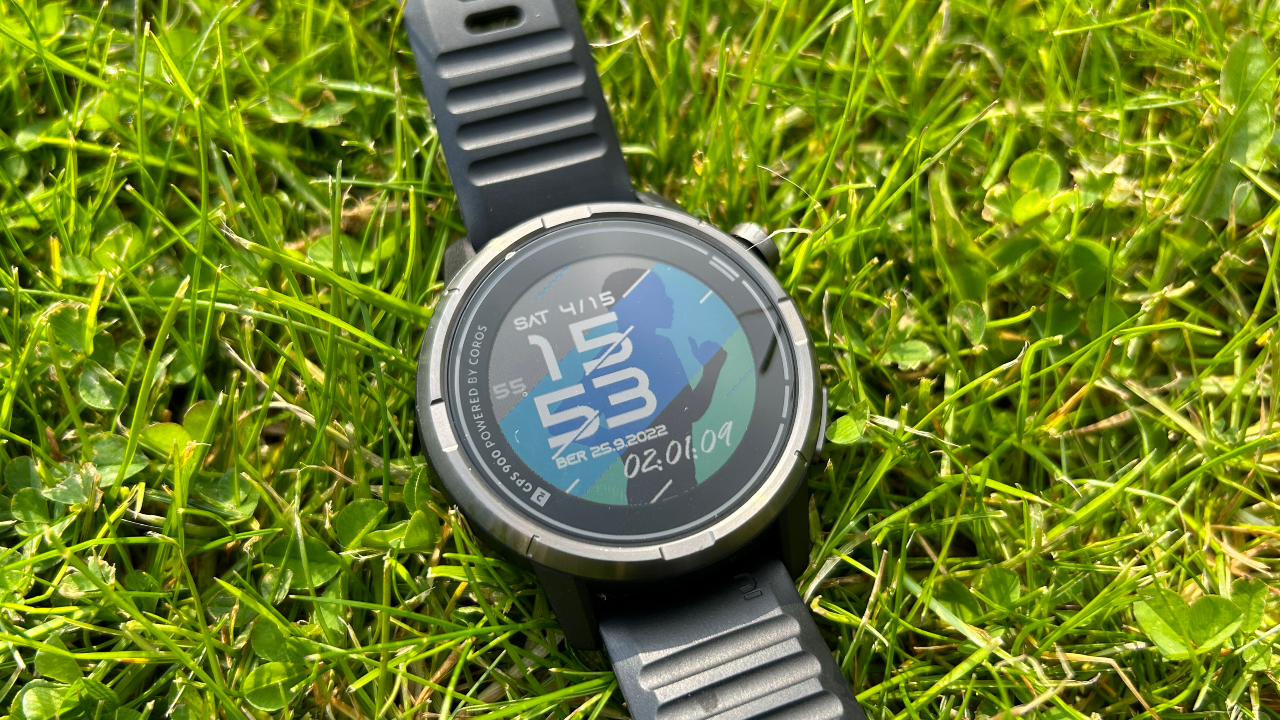
Specifications
Reasons to buy
Reasons to avoid
The Kiprun GPS 900 is built on the platform of the original Coros Apex, and uses Coros’s software and app. This means it lacks features that have become standard on watches in the last couple of years, such as multi-band GPS and heart rate variability tracking. However, it’s an attractive multisport watch that covers all the essentials and is cheaper than many rivals.
It doesn’t match the GPS accuracy of the best watches with multi-band, but I found it was accurate enough to pace training runs and races. The Kiprun GPS 900 offers features you may not expect at this price, such as breadcrumb navigation and detailed training analysis. It’s a shoot-out between the Kiprun GPS 900 and Coros Pace 2 for which provides better value. In my opinion, the GPS 900 has a more appealing design thanks to its metal bezel, while the all-plastic Pace 2 is lighter and a little cheaper. The Pace 2 has another key feature, however, which is that it’s available in the US, which is why it’s my entry-level pick if you’re there.
Read more in my Decathlon Kiprun GPS 900 review
Best Entry-Level Watch in US
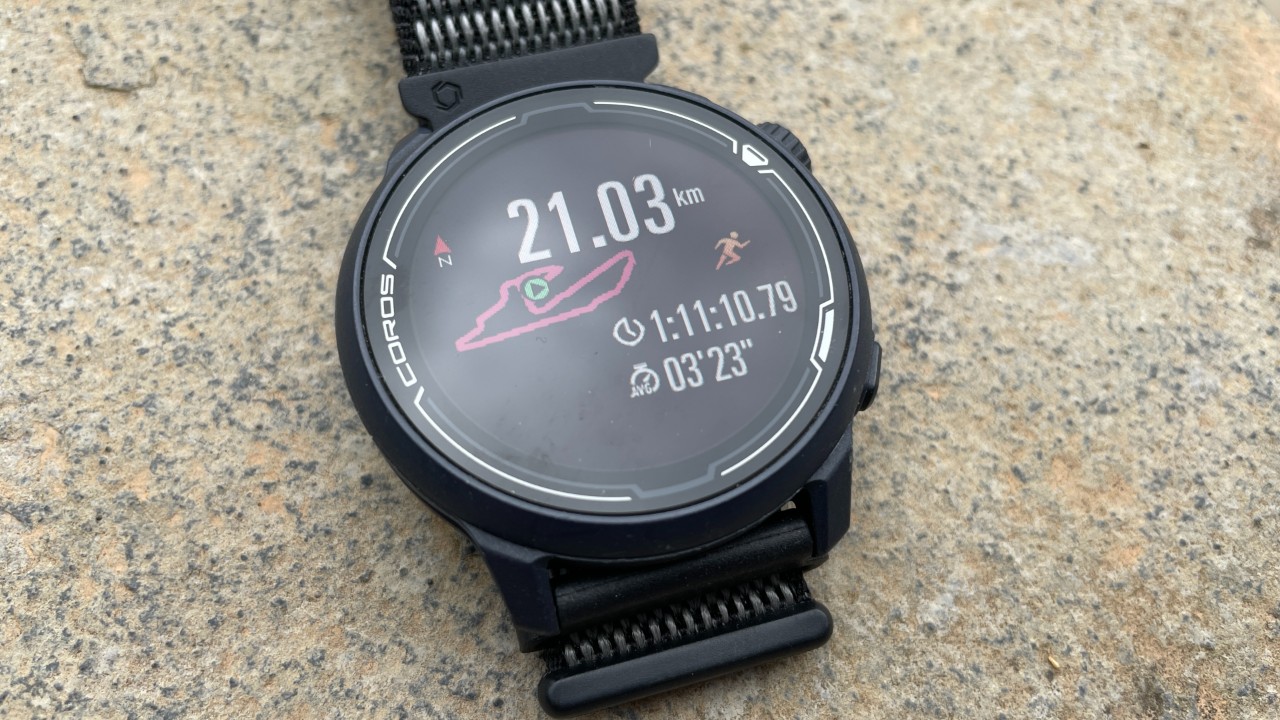
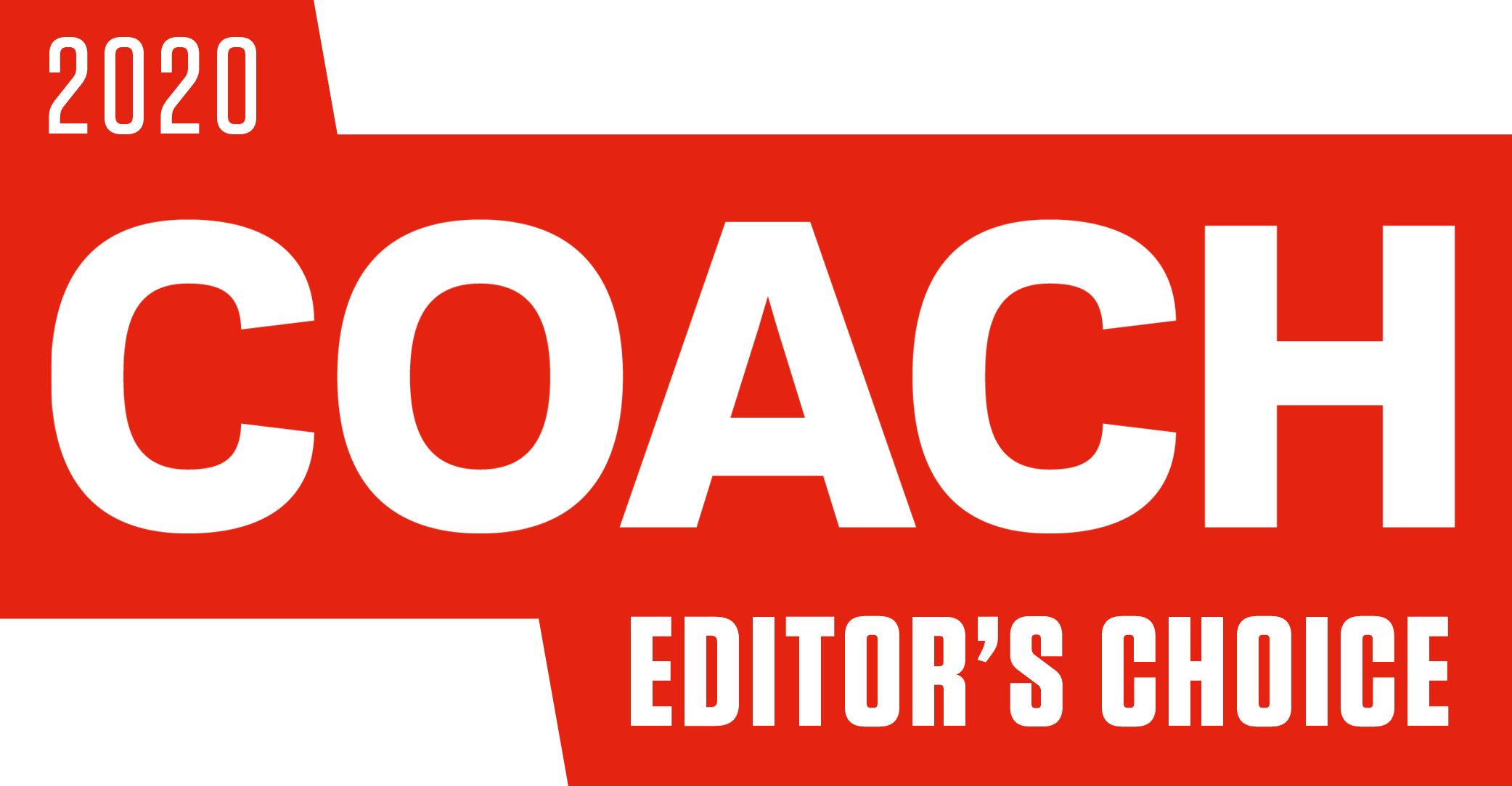
Specifications
Reasons to buy
Reasons to avoid
The Pace 2 offers terrific value to runners and triathletes alike, with accurate tracking, a wealth of stats, and excellent connectivity to external sensors via ANT+ and Bluetooth, as well as a monster battery life of 30 hours of GPS.
It’s also a very light watch that I found comfortable to wear 24/7, and you can load structured workouts and training plans on the Pace 2 to follow from your wrist. What it lacks is smart features, navigation, and the slicker software and training analysis you get with Garmin and Polar devices, which is forgivable considering the price.
Read more in my Coros Pace 2 review
Best For Beginners
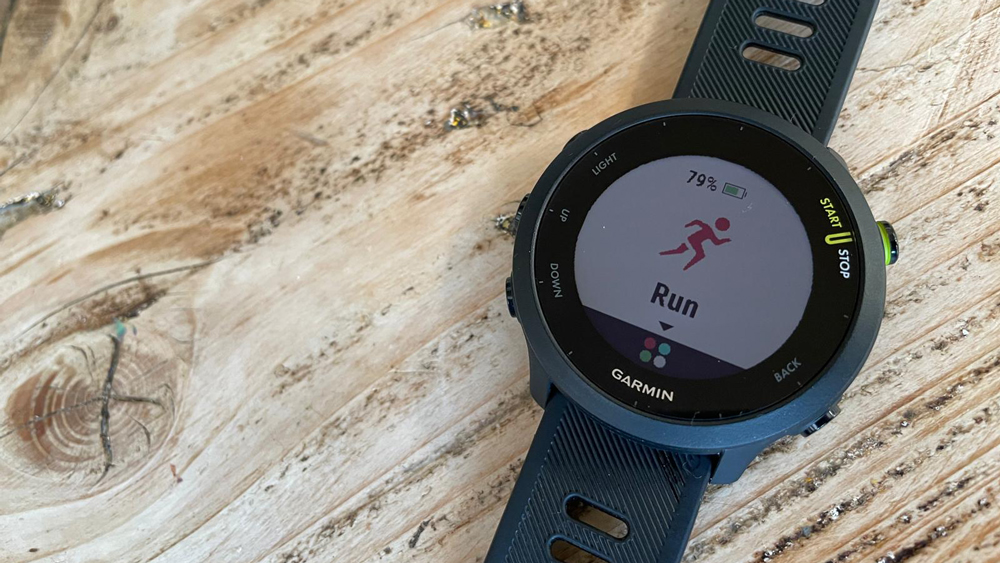
Specifications
Reasons to buy
Reasons to avoid
The Forerunner 55 is a serious rival to the Coros Pace 2 for the title of best entry-level watch, and it has some features that make it particularly well suited to new runners. These include guided training plans for 5K, 10K and half marathon races through Garmin Coach, advice on how long you should spend recovering after each run and—best of all if you’re not following a training plan—suggested workouts each day to help ensure your training is balanced between easy and hard running.
These features are on top of an excellent all-round running package that includes strong battery life (20 hours of GPS), customisable workouts, and accurate distance and heart rate tracking. I have also found that the Forerunner 55 is a better everyday activity and sleep tracker than its Coros rival, and its small size makes it very comfortable to wear 24/7.
Read more in my Garmin Forerunner 55 review
Best Smartwatch
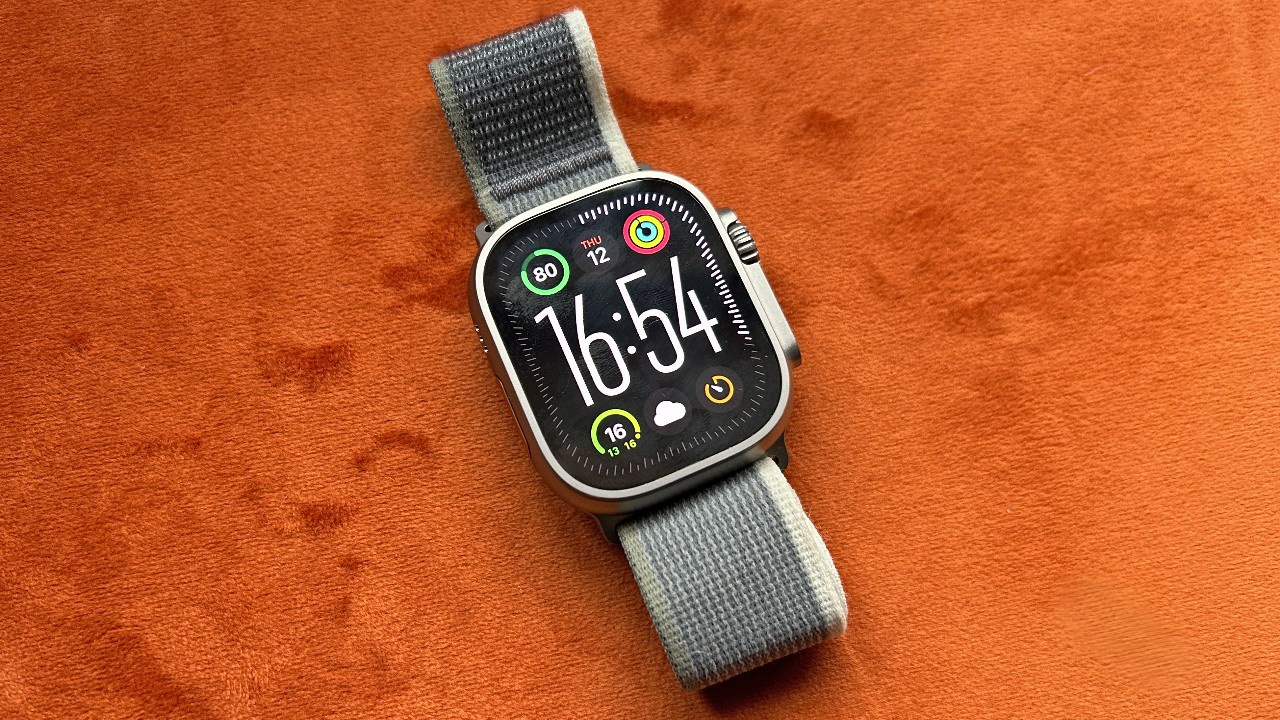
Specifications
Reasons to buy
Reasons to avoid
Apple didn’t reinvent the wheel with its updates to the second-gen Ultra, which has a brighter screen and a faster processor than the original Ultra, but it’s still light years ahead of other true smartwatches for sports tracking. The Ultra 2 has accurate multi-band GPS and an attractive but still hardy design, and both the native run tracking and third-party apps available are much better than anything you get on Android devices.
The only smartwatch that comes close is the Apple Watch Series 9, which is much cheaper, but doesn’t have the Action button to take laps, the multi-band GPS or the titanium case of the Ultra 2. The Ultra 2 also doubles the battery life of the Series 9, though at two days it’s still well short of what you get from sports watches.
Read more in my Apple Watch Ultra 2 review
Best Overall


Specifications
Reasons to buy
Reasons to avoid
The Forerunner 965 is my go-to running watch, providing all Garmin’s best features in a lightweight design with a bright AMOLED display. Despite the bright screen, the battery life is impressive, with the watch lasting me seven days on a charge with the always-on screen enabled. The sports tracking, training analysis and navigation features on the watch are second to none.
If you need greater battery life then the Garmin Fenix 7 and Enduro 2 have the edge, and if you can get by without maps then the Forerunner 265 is better value than the 965, but as a complete package the Forerunner 965 is the best sports watch going.
Read more in my Garmin Forerunner 965 review
Best Garmin Running Watch

Specifications
Reasons to buy
Reasons to avoid
The Garmin Forerunner 165 Music isn’t as packed with features as more expensive Garmin watches, like the Forerunner 265 and 965, but it’s cheaper, and still does everything you need a running watch to do. Its GPS tracking is accurate and, while it doesn’t have as extensive training analysis as other Garmins, it provides useful info like your recovery time and estimated VO2 max.
This is also the most affordable Garmin sports watch to feature an AMOLED screen, which is a significant step up on the display of the Garmin Forerunner 55 and 255, though the latter is still an excellent option at a similar price if you’d prefer an LCD screen. Along with reliable sports tracking, the Forerunner 165 Music also has music storage and breadcrumb navigation.
Read more in my Garmin Forerunner 165 review
Best For Battery Life
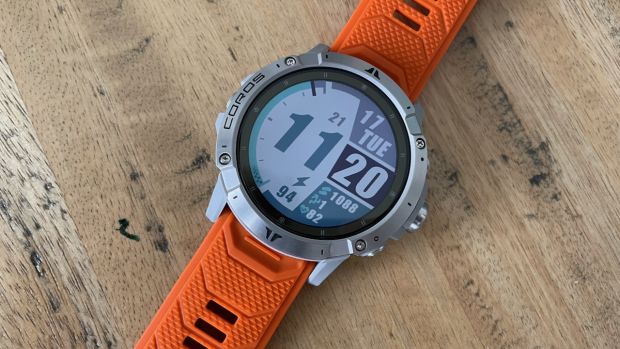
Specifications
Reasons to buy
Reasons to avoid
Coros has always pushed the boundaries of expected battery life and the Vertix 2 lasts longer than any other GPS sports watch I’ve tested. It will last more than a month even with intensive use and offers all the features you’d expect at this price. In my experience only the Garmin Enduro 2 gets close to the Vertix’s battery life and while it’s comparable during runs, the Coros battery drains slower in between runs to earn the prize of top spot.
That includes GPS tracking using GPS, GLONASS, Galileo and Beidou satellite systems simultaneously, and you can also use multi-band tracking, though this brings the GPS battery life down from 90 hours to 50. There’s also a GPS-only mode that nets you a monster 140 hours of tracking.
The Vertix 2 is also one of the few sports watches outside Garmin’s range to offer color maps. However, there is no turn-by-turn navigation, and in general I’d say the mapping experience falls short of what you get on the Fenix range and on the Epix 2 and Enduro 2. The Vertix 2 does also offer music storage, though it can’t be linked to a streaming service yet.
Read more in my Coros Vertix 2 review
Best For Trail Running
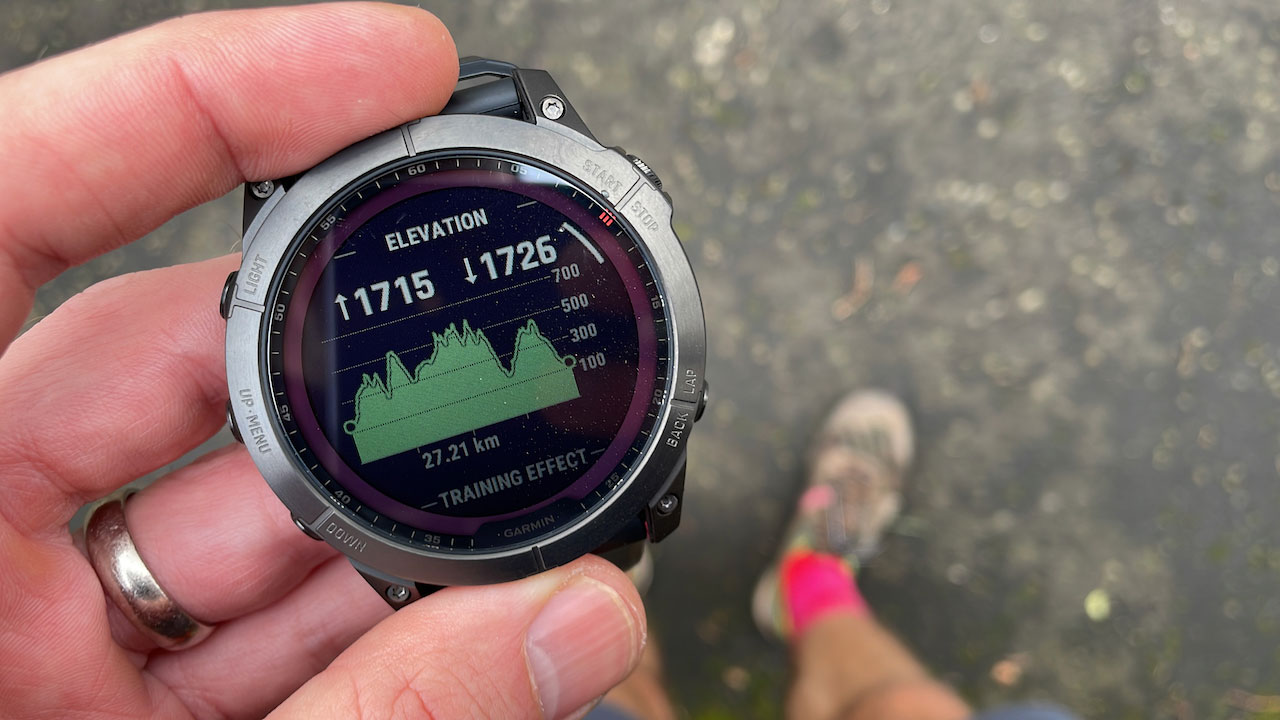

Specifications
Reasons to buy
Reasons to avoid
The Garmin Fenix 7 Pro is a modest update on the Garmin Fenix 7, and the older watch remains a great option for runners. However, the new model stands out as an even better pick for those heading off-road, because every watch in the Fenix 7 Pro range has a flashlight, solar charging and more accurate multi-band GPS, all of which are particularly useful for trail runners.
If battery is a key concern then the largest model, the Fenix 7X Pro, provides the longest life, or you can upgrade to the Garmin Enduro 2 for even more battery life if needed. As you’d expect from a top Garmin, you also get brilliant mapping and navigation tools for your trail runs, plus extensive training analysis including the brand’s hill scores, which will be useful for trail runners constantly running up mountains.
Read more in my Garmin Fenix 7 Pro review
Best For A Big Spend

Specifications
Reasons to buy
Reasons to avoid
There are three models in the Garmin Epix Pro range—42mm, 47mm and 51mm—and the common hardware upgrades on the Garmin Epix 2 are an improved heart rate monitor and flashlight.
However, the bigger the model the bigger the battery, and the 51mm distinguishes itself with an incredible battery life for an AMOLED sports watch. It lasts me more than 10 days, even when running outside almost every day with the screen in always-on mode. This is more than double what I get from the Epix 2 47mm watch. If you use the raise-to-wake option outside of workouts you can get a month of battery life, which challenges the juice you get from the non-AMOLED models in Garmin’s range, like the Fenix 7 Pro.
You’ll pay more for the Epix Pro 51mm, and it’s a big watch that you’ll notice on your wrist, but it’s a worthy trade-off for the bigger battery. Also, when I traded the silicone band it comes with for a lighter nylon band the weight wasn’t so noticeable.
Read more in my Garmin Epix Pro review
More Tried-And-Tested Recommendations
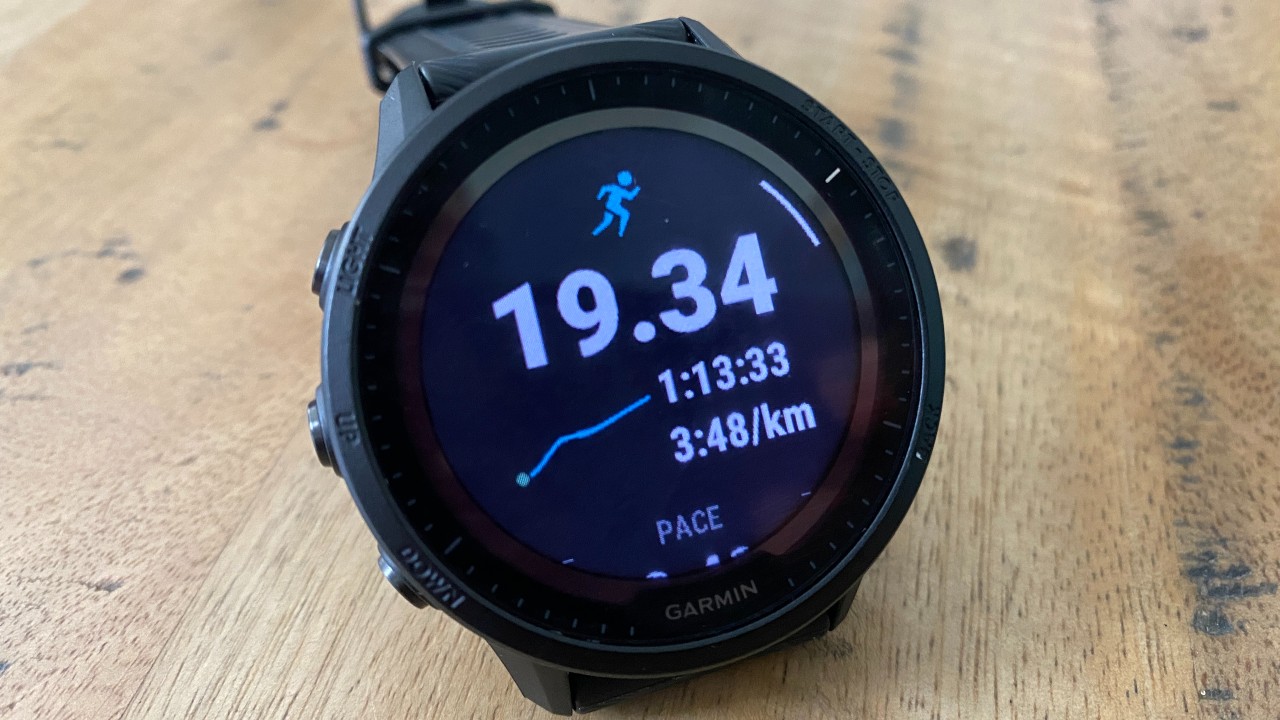

Specifications
Reasons to buy
Reasons to avoid
If you’re not excited by having an AMOLED display on your sports watch, then the Forerunner 955 offers great value by having the same features as the Forerunner 965, just with an all-plastic design and an LCD touchscreen that’s not as bright when indoors or under cloud cover.
The Forerunner 955 is a great candidate for the title of best-value sports watch because it provides all the software features you find on Garmin’s top watches, including color maps, and is regularly in sales for less than its RRP. I’d say the regular Forerunner 955 is better value than the 955 Solar, which costs more but didn’t add much in the way of battery life in my testing.
Read more in my Garmin Forerunner 955 review
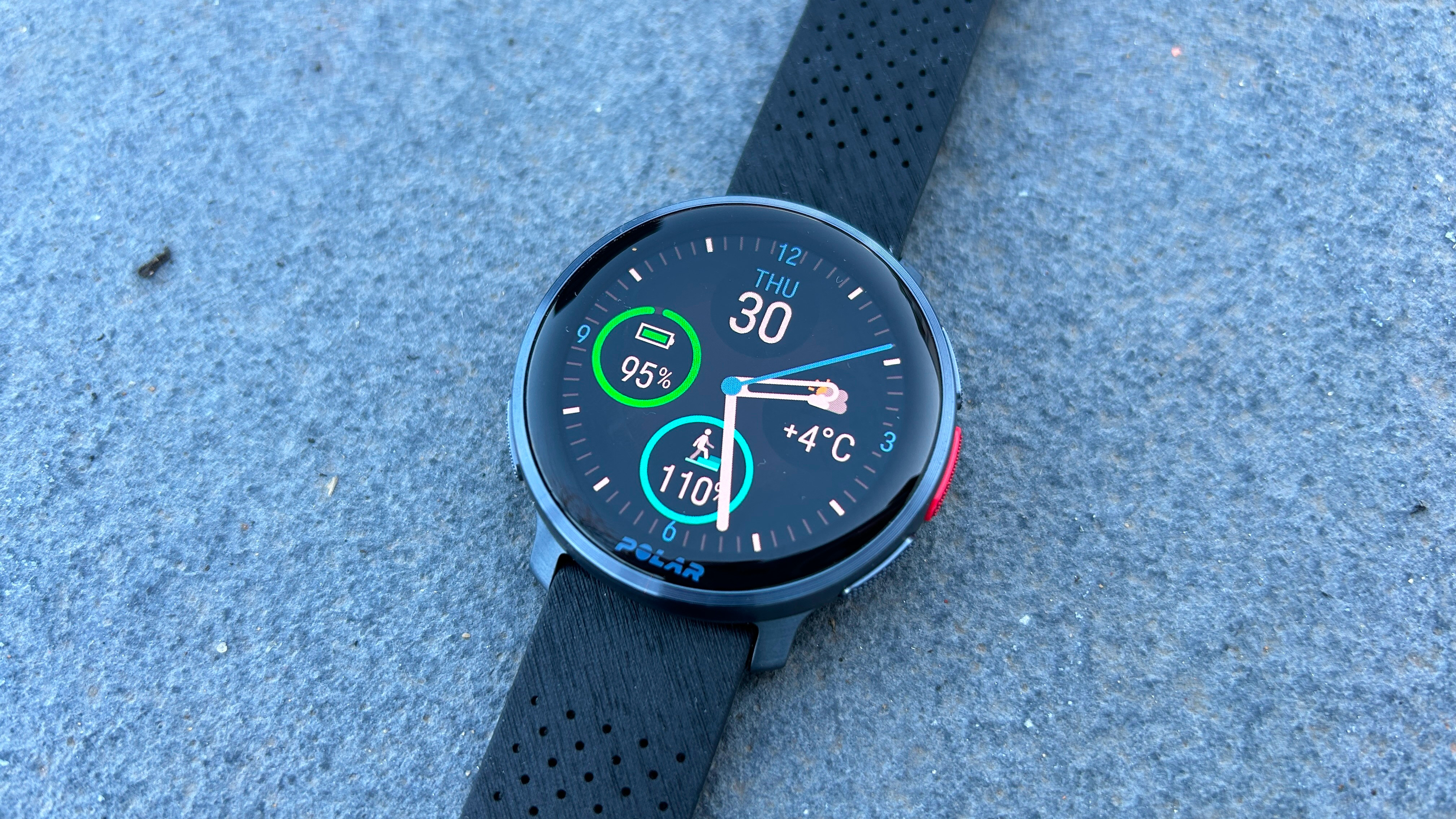
Specifications
Reasons to buy
Reasons to avoid
The Polar Vantage V3 is comfortably the best Polar watch to date, and it rivals some of the top AMOLED options on the market like the Garmin Forerunner 965 and Suunto Race with its accurate multi-band GPS and color maps. Unfortunately in my testing I found the Vantage V3 fell just short of the standards set by those two watches in particular, which makes it hard to recommend unless you are dead set on getting a Polar watch.
That might be because of the sleep and recovery features on the Vantage V3, which is an area I still think Polar excels in compared with other brands, plus the V3 looks fantastic. However, the V3 lacks the smart features and training analysis you get on Garmin, has a less durable design than the Race, and has a shorter battery life than both the Race and Forerunner 965. And since it’s the same price as the Garmin (in the US) and more expensive than the Suunto, those other watches offer better value.
Read more in my Polar Vantage V3 review
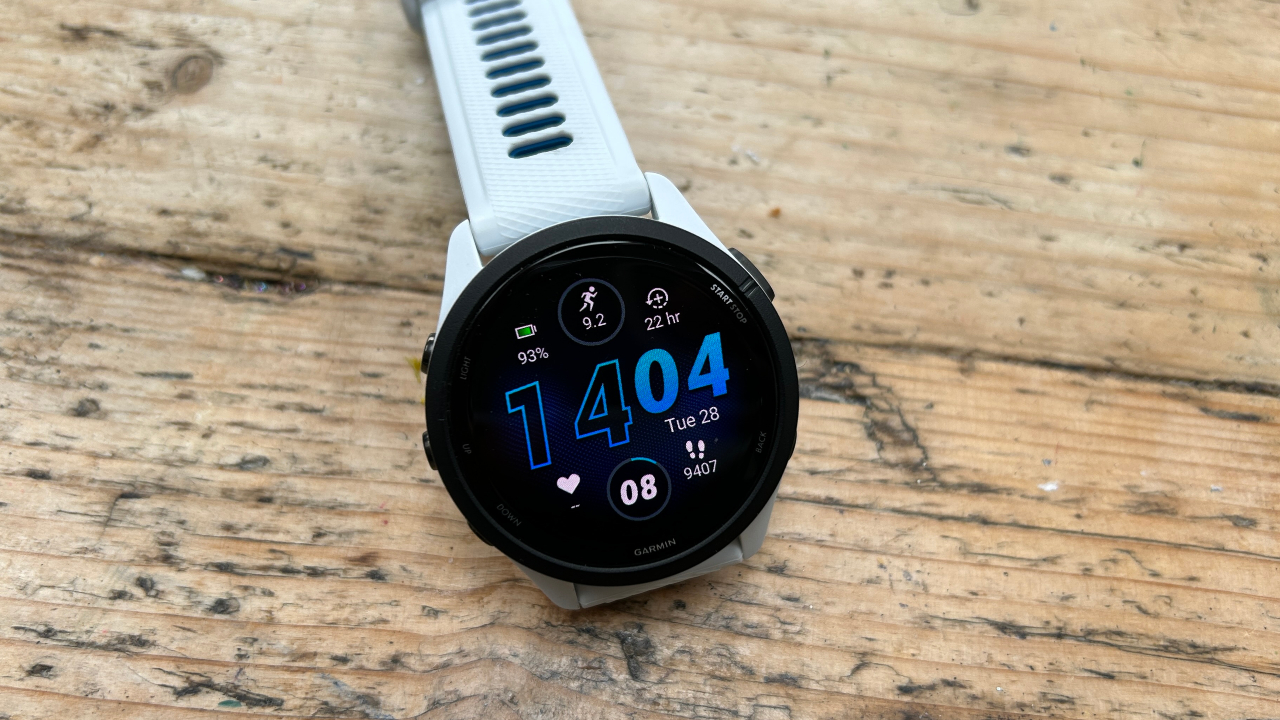
Specifications
Reasons to buy
Reasons to avoid
If I was buying an AMOLED sports watch the Forerunner 265 is the one I’d get, because it has all the main features I want at a lower price than the top dogs like the Garmin Forerunner 965 and Epix. I love the color maps you get on those watches, and that’s the main feature that the Forerunner 265 lacks, but the 265 does have breadcrumb navigation and that is good enough to keep me on track.
The Forerunner 265 also has an AMOLED display, which is easy to read in all conditions, and there’s no other sports watch of its standard available with an AMOLED display for less. It also has Garmin’s training readiness feature, accurate multi-band GPS tracking and music storage, and comes in two sizes. The smaller Forerunner 265S actually has a longer battery life owing to its smaller screen.
Speaking of battery life, the Forerunner 265 doesn’t last as long as the older 255, which has a duller display. But the 265 still saw me through four to five days of heavy use on a charge, and with its brighter screen, for me that makes it a better option.
Read more in my Garmin Forerunner 265 review

Specifications
Reasons to buy
Reasons to avoid
One of the most pleasant surprises of 2022, the Amazfit T-Rex 2 is an attractive option for runners seeking a genuinely useful sports watch with a smartwatch-style screen. It’s not perfect: One flaw is that in bright sunlight I found that it’s not always easy to read your stats quickly during a run––but it’s not that hard either, and it’s a flaw I can forgive given the value you’re getting here.
The T-Rex 2 has proper customisable data screens for your runs, plus an intervals mode, and offers multi-band GPS tracking that I found was generally accurate even in tricky GPS conditions. The heart rate monitor is also pretty good, though it’s a shame you can’t pair external straps to get the best results on this front because I did still experience the usual errors with optical heart rate monitoring from time to time.
It’s not a proper smartwatch, with no music support or app store to call on, but it has the screen of one paired with the sports-tracking smarts and rugged exterior of an adventure watch, all at a great price.
Read more in my Amazfit T-Rex 2 review

Specifications
Reasons to buy
Reasons to avoid
The Suunto Race is the best running watch you can get that’s not made by Garmin, and it gives Garmin a run for its money by being cheaper than models like the Forerunner 965 and Epix 2. The Race has an AMOLED display, color maps, impressive battery life and very accurate multi-band GPS. It also has a sapphire screen and you can get steel or titanium models for less than you pay for those materials in Garmin’s range.
While Garmin’s best watches do offer more smart features, including music storage and NFC payments, and the navigation tools and training analysis are also better with Garmin, the Suunto Race is great value for such an excellent AMOLED watch. I’d say it’s a much better option than the Suunto Vertical, which offers the same features and longer battery life but doesn’t have an AMOLED and is much more expensive.
Read more in my Suunto Race review
Running Watch Buying Advice
What are the key features of running watches?
Running watches all serve the same core purpose, which is to track your distance, pace and heart rate, and provide those stats live on your wrist. (If you’re unsure why you’d even want to know these things, here’s an explainer of how a running watch can improve your training.)
All the watches above do this job well because they have built-in GPS and heart rate monitors. However, there are big differences in the design, battery life and other features, so the best place to start when picking a watch is to consider what features are essential for you.
Here are some of the key features explained.
Battery life
Running watches usually have at least enough battery life to allow you to track a full marathon with GPS, but you can pay more for a longer-lasting battery. The largest, most expensive watches last several weeks on a charge even with regular running, while smaller running watches should still have around seven days’ life.
Smartwatches or running watches with AMOLED screens will have shorter battery life, sometimes as little as one or two days; some features will use up battery life more quickly, like playing music on the watch or using more accurate GPS modes.
All-systems-on and multi-band GPS
GPS accuracy is something many runners obsess over, and the latest running watches offer more accuracy than ever thanks to new chipsets and GPS modes. In the past watches would usually either just use GPS satellites, or offer a mix of two satellite systems like GPS + GLONASS, or GPS + Galileo. Many watches now offer all-systems-on GPS tracking, which uses up to five satellite systems at once to help avoid periods where no satellite has a fix on your position.
A further upgrade in accuracy comes from multi-band tracking, which uses two frequencies to track your position, which again reduces inaccuracy in tracking, especially in challenging conditions such as when you’re under tree cover or among high buildings.
However, not all multi-band tracking is equal. In our testing we’ve found that Garmin and Apple devices with multi-band are very accurate, but it does not really improve the tracking on the Coros, Polar and Huawei watches that use it.
Music storage
Rather than carrying your phone with you, your music can be loaded on to the watch to stream to Bluetooth running headphones. The most basic form of this is drag-and-drop storage, but it’s more convenient if the watch links to a streaming service like Spotify, since most of us don't have a large music library stored on our computers any more.
If the watch does link with a free streaming service then you will almost certainly need a premium account with that service to be able to transfer your files across to the watch to listen to offline.
Smartwatch features
Beyond music, the most useful feature for runners is contactless payments, so you can buy a drink or get a bus home in a pinch. At the moment this is an area where Apple and Android smartwatches are well ahead, since Apple Pay and Google Pay are easy to set up and accepted almost everywhere. In contrast, many high street banks, especially in the UK, don’t support Garmin Pay and Fitbit Pay yet.
Structured workouts
This feature allows you to specify the steps of a workout and then follow it on a watch. It’s especially useful for intervals as well as other types of run which require you to stay at a certain pace or heart rate zone. Some watches will also suggest a structured workout each day for you to follow based on your fitness and recent training load.
Guided training plans
Here, the watch sets a schedule of structured workouts to prepare you to run a set distance – normally 5K, 10K, a half marathon or marathon. The plan is set up in the partner app and usually customised to your ability and the time you have available to run each week.
Training analysis
This typically assesses how each run affects your fitness and whether your training as a whole is being productive. Most watches will estimate your VO2 max and judge your training load to ensure you’re not overdoing it or failing to do enough of a certain types of workouts, such as sprint intervals or easy runs. Some Garmin watches go beyond this to analyse how well you’re acclimatising to heat or altitude, and they also give you a training readiness score each day based on your recent activity, sleep and stress levels.
Maps and navigation
These turn your watch into a satnav, although the full-colour maps you may be used to are available on only a few, very expensive devices. Cheaper watches will offer breadcrumb navigation, which essentially is a line to follow on a plain background, or a pointer to help you navigate through a route, sometimes with turn-by-turn directions.
Navigation is an area where Garmin excels in particular – its best watches have colour maps and useful features like ClimbPro, which analyses the climbs and descents in your route so you can view them individually as you’re tackling them and judge your effort accordingly.
How much do running watches cost?
The best entry-level running watches cost around $110/£100 to $140/£130, though there are cheaper options that will get the basic job done. Watches in this bracket will offer reliable tracking, structured workouts, solid battery life, and even some useful training analysis and advice.
Raise your budget to $200/£180 and you’ll get longer battery life, devices with bigger and better-quality screens, more in-depth training analysis and breadcrumb navigation. You can also get music storage at this price. If you can stretch to $400/£380 you’ll have your pick of the best true smartwatches for runners.
If you have more cash than that, and the inclination to spend it on a running watch, there are some truly remarkable devices available in the high-end category. Here you’ll find features like full-colour maps (a real game-changer) and more accurate GPS modes, plus batteries that last over a month.
Why do runners use Garmin watches?
You will have noted that most of the watches on our list are made by Garmin, and if you eye up the wrists of runners in general you’ll spot more Garmins than any other brand. Garmin has been making excellent running watches for a long time, which inspires loyalty, and its current range features the most accurate and feature-rich devices on the market.
Along with nailing the essential features runners need, Garmin watches with more advanced features include the best navigation tools and most insightful training analysis available, along with some useful smart features like music storage. There are certainly excellent watches from other brands and in some categories Garmin is not the best option, but they’re always a reliable pick.
Is Coros better than Garmin?
Coros is a relatively new brand but has made great progress in producing running watches that offer a lot of features. There are some areas where Coros particularly excels, such as battery life, and value – often the equivalent Garmin watch will be more expensive than a Coros and there are some Coros watches we rate as the best option for certain runners. However, overall Garmin watches tend to offer more features and a better user experience honed by many more years of making watches, especially when it comes to high-end devices.
Is an Apple Watch or Fitbit better for running?
Fitbit’s range of smartwatches and fitness trackers do a good job of tracking the key stats of your runs, like time, distance and calories burned, but lack the depth of data and accuracy you get from the best running watches.
That was true of the Apple Watch’s native sports tracking until the watchOS 9 software update, which added several features to upgrade to tracking to meet the standard of a sports watch. However, what really sets the Apple Watch apart from Fitbit devices is the App Store, which contains several excellent run tracking apps that offer more depth in the stats and customisation on offer, plus navigation features.
Trumping anything made by Fitbit, the Apple Watch Ultra is the best running watch made by Apple – it has an extra button and multi-band GPS tracking, which aren’t available on the Apple Watch Series 8. However, one area where Fitbit has the edge is battery life: its watches last three to five days on a charge, whereas even the bigger Apple Watch Ultra needs charging every two days.
Sign up for workout ideas, training advice, reviews of the latest gear and more.

Nick Harris-Fry is a journalist who has been covering health and fitness since 2015. Nick is an avid runner, covering 70-110km a week, which gives him ample opportunity to test a wide range of running shoes and running gear. He is also the chief tester for fitness trackers and running watches, treadmills and exercise bikes, and workout headphones.
